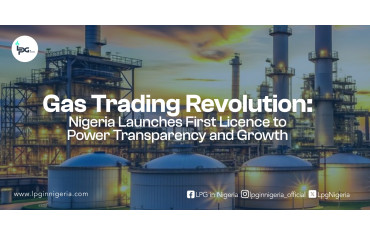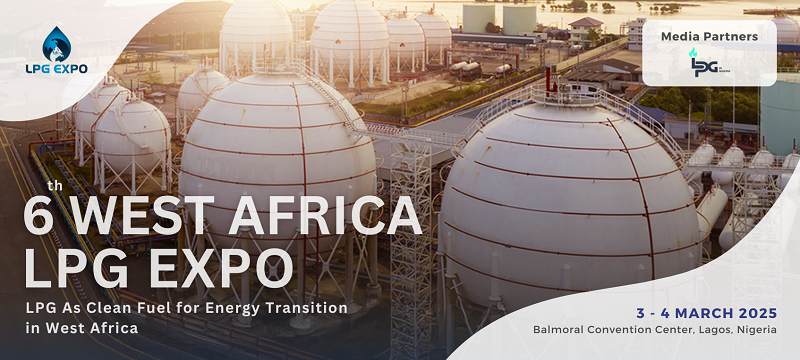- 3559
- 0
Sharing Ideas and Updates on LPG in Nigeria and related information to enable effective collaboration within the LPG Value Chain
China's Growing Appetite For Russian LPG Challenged By Transport, & Infrastructure Constraints

Further growth in Russian LPG exports to China after the surge in 2022 is expected to be limited by infrastructure and shipping bottlenecks, as well as financial restrictions, after the EU embargo on Russian oil products. A G7 price cap came into force on Feb. 5. China's imports of heavily discounted Russian LPG surged to 159,600 mt in 2022 from around just 14,000 mt in 2021, General Administration of Customs data showed, in line with a steady rise in loadings at Russian ports since mid-2022.
LPG loadings at Russian ports rose to 74,000 mt in June after averaging 57,000 mt/month over February-May, according to S&P Global Waterborne LIVE LPG & Ethane data, before rising further to 93,500 mt in November and 92,000 mt in December, led by shipments to Turkey, India, China and Estonia, which re-exported to Ukraine.
However, Russian loadings then dipped sharply to 38,600 mt in January, S&P Global data showed, ahead of the latest EU and G7 actions in response to the country's invasion of Ukraine.
Separate data from Global Trade Atlas showed Russian LPG exports to China rebounding to 215,000 mt in 2022 from 52,000 mt in 2021 and 84,000 mt in 2020.
China's imports of Russian LPG in 2022 fluctuated from 1,000 mt in April to a low of 300 mt in July and a peak of 56,000 mt in September, before ending the year at 24,000 mt in December, the customs data showed.
'Destructive' Impact
A Western trade source said the abundance of cheap Russian LPG exports was having a "destructive" impact on the Eastern European market.
A distributor said some companies with excessive Russian cargoes were disposing of them at massive discounts, most of which were headed to Asia due to the EU ban on Russian oil products, in effect limiting Russian LPG supply to Poland.
"There is a big reaction from Eastern Europe because of the lack of Russian supply," the distributor said, referring to Eastern Europe's dependence on Russian LPG prior to the invasion of Ukraine.
Market sources said discounts for Russian LPG of $200-$300/mt to current prices were incentivizing exports to China, but lagging infrastructure and the long, costly voyage to East Asia were restraining shipments.
"There is only about one or two border crossings, so the logistical bottlenecks [by rail] are not helping flows," a second distributor said. "Russian LPG is at huge discounts to [European] prices -- it is so cheap that the petrochemical industry in Asia can crack it themselves."
Sources said that most exports are via old rail infrastructure, with an estimated 120,000 mt capacity.
Shipping Challenge
Russian LPG was shipped aboard VLGCs for the first time in 2022 via ship-to-ship transfers using Russian trader Sibur's Navigator vessels.
The 50,513 dwt VLGC Eiger Explorer performed the first STS transfer in July 2022 off Rotterdam with a Russian cargo before departing July 8 to reach Ningbo on Sept. 9, according to trade sources and Platts cFlow ship and commodity tracking software from S&P Global Commodity Insights.
"That cargo went to China Gas," one Chinese source said, referring to the country's major city gas supplier, adding it was shipped by a Western trading firm.
This was followed by the 57,555 dwt VLGC Monte Rosa Explorer, which departed Tallinn port (Muuga Harbor) in Estonia on Nov. 6 with a cargo that arrived in Guangdong in southern China on Dec. 27, according to shipping sources and cFlow.
However, the expiry of the 10-year contract with Navigator Gas for the pair of ice-class ships will mean Sibur will be hard-pressed to do such transfers in the future, sources said.
With EU sanctions in place, Russian exporters will be restricted from chartering ships or getting Western insurance cover and financing, even if it may not be illegal for Asian countries to buy Russian products, trade sources said.
However, although the EU sanctions on Russian-origin material could restrict outflows, one source said "Russia is already using their own insurance companies," suggesting that exports will still find their way East.
Changing Flows
While Chinese buyers may be able to use their own letters of credit and insurance cover, there are not many traders comfortable with buying that far away, sources said.
China has also been a major importer of Iranian LPG, circumventing US sanctions in place since 2018, after building an armada of mainly older VLGCs since the previous sanctions in 2014 against the oil producer's nuclear program, as well as arranging insurance for imports.
Iran and Russia have signed a memorandum of understanding to link their banking messaging systems through which financial and banking exchanges will be facilitated, Mohsen Karimi, Deputy Governor for International Affairs of the Central Bank of Iran, said Jan. 29, Iran's semi-official MEHR news agency reported.
Karimi said the messaging system is immune to sanctions as it is based on the two nations' internal infrastructure, enabling all standard banking messages including money order, guarantee and LCs.
A representative of the Russian Central Bank said the MoU will "greatly help the two countries' businesspeople," MEHR reported.
Inflows of Russian LPG to China come as Asia faces a shortfall of Middle Eastern supply due to maintenance at terminals and storage tanks, and OPEC+'s commitment to oil cuts.
While some trade sources said the Russian volumes were still too small to offset any shortfall, others said more LPG could eventually flow along with other oil products, especially when availability is tight in Asia.
SOURCE:
Photo: Reuters
S & P Global.















0 Comment.